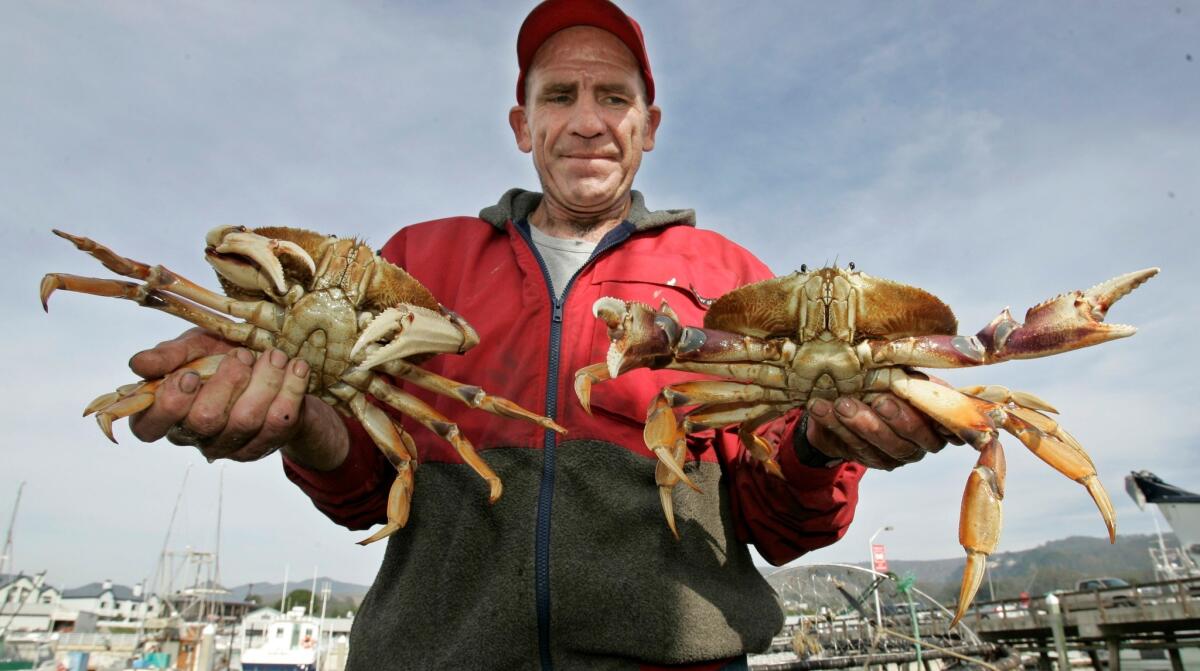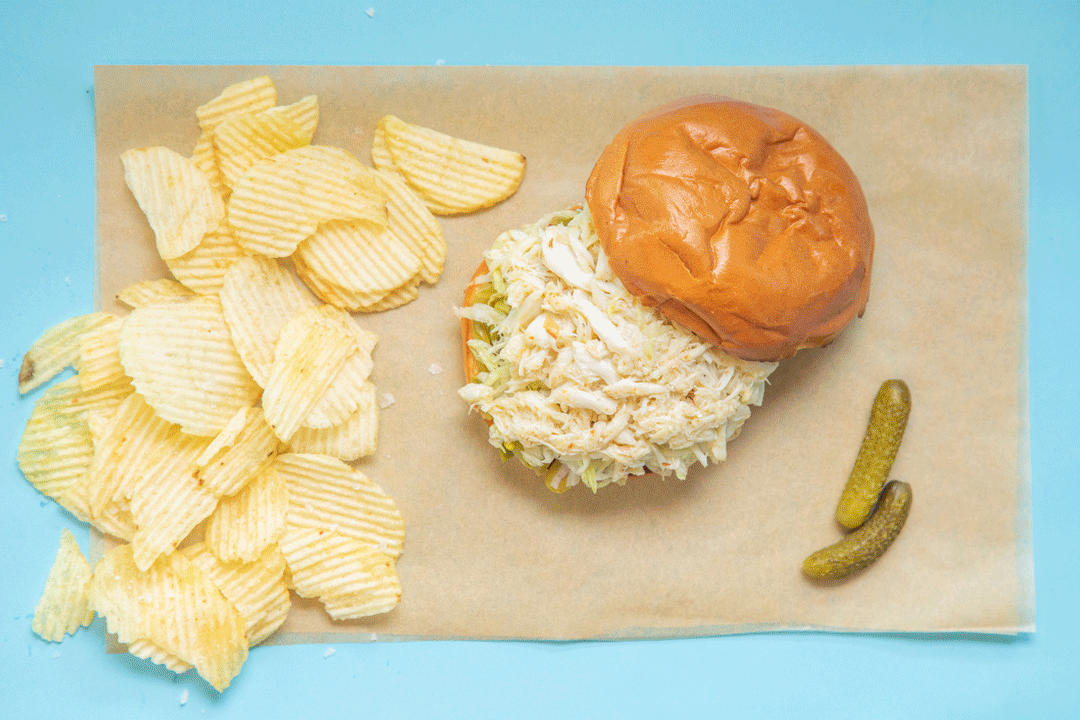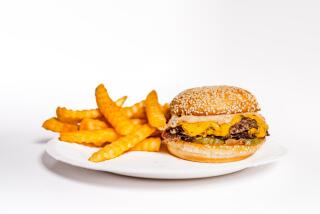Feeling crabby? Here’s how to catch, cook and clean your own Dungeness feast

- Share via
At my house we celebrate four major holidays at this time of year: Thanksgiving, Christmas, New Year’s and the opening of Dungeness crab season. I am willing to concede the possibility that God has made a more perfect food, but I haven’t come across it yet.
Here’s a typical Dungeness Day menu: Crab. White wine. Maybe a green salad afterward and, if we’re feeling particularly indulgent, something like a lemon curd tart to finish.
But none of those other things is necessary. Cold cracked crab by itself, as much as you can eat, is extravagance defined.
Dungeness crabs are big (they’re weighed in pounds rather than ounces) and generous (about 25% edible flesh as opposed to 15% in more meager crabs). And the meat comes away in large, buttery flakes that practically melt in your mouth, with a sweet flavor balanced by just a tinge of what wine writers might call “minerality” -- a slightly pointed savory undertone like something you might find in a great white Burgundy.
In every area where crabs grow, people seem to regard their local product as a special treat. I know I have argued the superiority of Dungeness crab from the Chesapeake Bay to the Adriatic Sea. Never once has anyone succeeded in convincing me I’m wrong (though there was that simple dish of cold crab meat dressed with just a whisper of really good olive oil that I had one hot summer night in Venice, Italy, that came close).
Dungeness crabs are primarily a winter treat, at least in the Lower 48. Traditionally the California harvest begins just before Thanksgiving from Avila Beach, near San Luis Obispo, to San Francisco and gradually progresses north from there.
My family is not alone in regarding it as a holiday treat -- about 80% of the California catch is taken in December and January. Oregon usually starts around the first of December and Washington follows not long after. In British Columbia, the Dungeness harvest doesn’t start until April and in Alaska, it’s a summer crab.
The Dungeness fishery is considered a model of sustainability. Only male crabs are taken and only when they are at least 6 1/4 inches across the carapace, meaning they are at least 4 years old and already have been sexually active for a couple of years (this is California after all).
Cooking and cleaning Dungeness crab is easy.
Start by choosing a good crab. It should be well filled out, with a hard shell around the legs. And it should be full of fight. Reject any that seem light or lackadaisical.
In polite company, allow half a crab per person. If it’s just family, make it a whole one. If you’re by yourself, use your own discretion. Dungies yield about 25% of their live weight in picked meat. With an average weight of 2 to 2 1/2 pounds, you’ll get a little more than half a pound of pure meat per crab.
Put the crab or crabs (of course, you’ll want to invite friends) in a big pot and cover with generously salted cold water. Bring to a boil, and 15 to 20 minutes after the first big bubbles appear, the crabs will be done. They’ll turn a dusty red, but to verify, pull off one of the little back legs -- there should be little feathers of body meat attached.
Drain the crabs and set them aside until they are cool enough to handle (there is some disagreement whether Dungeness are best served still slightly warm or well chilled, a question worthy of extensive investigation).
To clean the crab, pry off the top shell, lifting from the back hinge, and rinse out the fat and viscera (die-hards may want to collect this; it is heavenly with mayonnaise). Pull off the gills on either side, the jaws and the “apron” underneath.
Pull off the legs and crack each large section by whacking it with the back of a chef’s knife. Cut the crab body in half lengthwise, then cut each half in sections between the leg joints. Put them on the platter and you’re ready to feast.
As good as Dungeness crab is by itself, here are a dozen recipes that use whatever might be left over ... however unlikely that might seem.
Are you a food geek? Follow me on Twitter @russ_parsons1
More to Read
Eat your way across L.A.
Get our weekly Tasting Notes newsletter for reviews, news and more.
You may occasionally receive promotional content from the Los Angeles Times.











